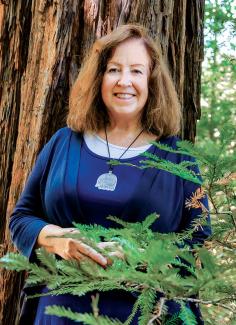Bibi Gaston’s (NC ’81) love of nature led her down one path: After Tulane, she studied landscape architecture at the University of Virginia. But later on, she turned a fascinating family history into two books and discovered that her love of nature was a common thread with one of her ancestors, Gifford Pinchot, who with President Theodore Roosevelt co-founded the U.S. Forest Service. Gaston’s newest book, Gifford Pinchot and the Old Timers Volume I, details the founding of the agency.
Preserving the past
As a child, Gaston spent a lot of time outdoors, planting, examining trees, and thinking about gardens and parks. Later, she went on to major in political science at Newcomb. After studying at UVA, as a new landscape architect she worked on many high-profile projects, such as Central Park in New York.
“I’m particularly interested in historic preservation projects,” said Gaston, whose past contributions include work on design teams for the Hirshhorn Museum and Sculpture Garden in Washington, D.C., the Historic Columbia River Highway in Oregon, and the Oregon Garden.
She describes her years establishing herself as a landscape architect as “very consuming,” leaving little time to think beyond her work and often necessitating that she follow landscape project opportunities around the country.
And her political science background — seemingly unrelated — actually came in handy, as many of her projects involved governmental or municipal spending and community collaboration.
“Everything dovetails with politics, particularly architecture, when it comes to zoning, planning and the fundamentals of how we organize ourselves around public space,” she said.
She later discovered that her early love of nature and desire to design and plan timeless green spaces for public use was something of a family tradition.































































